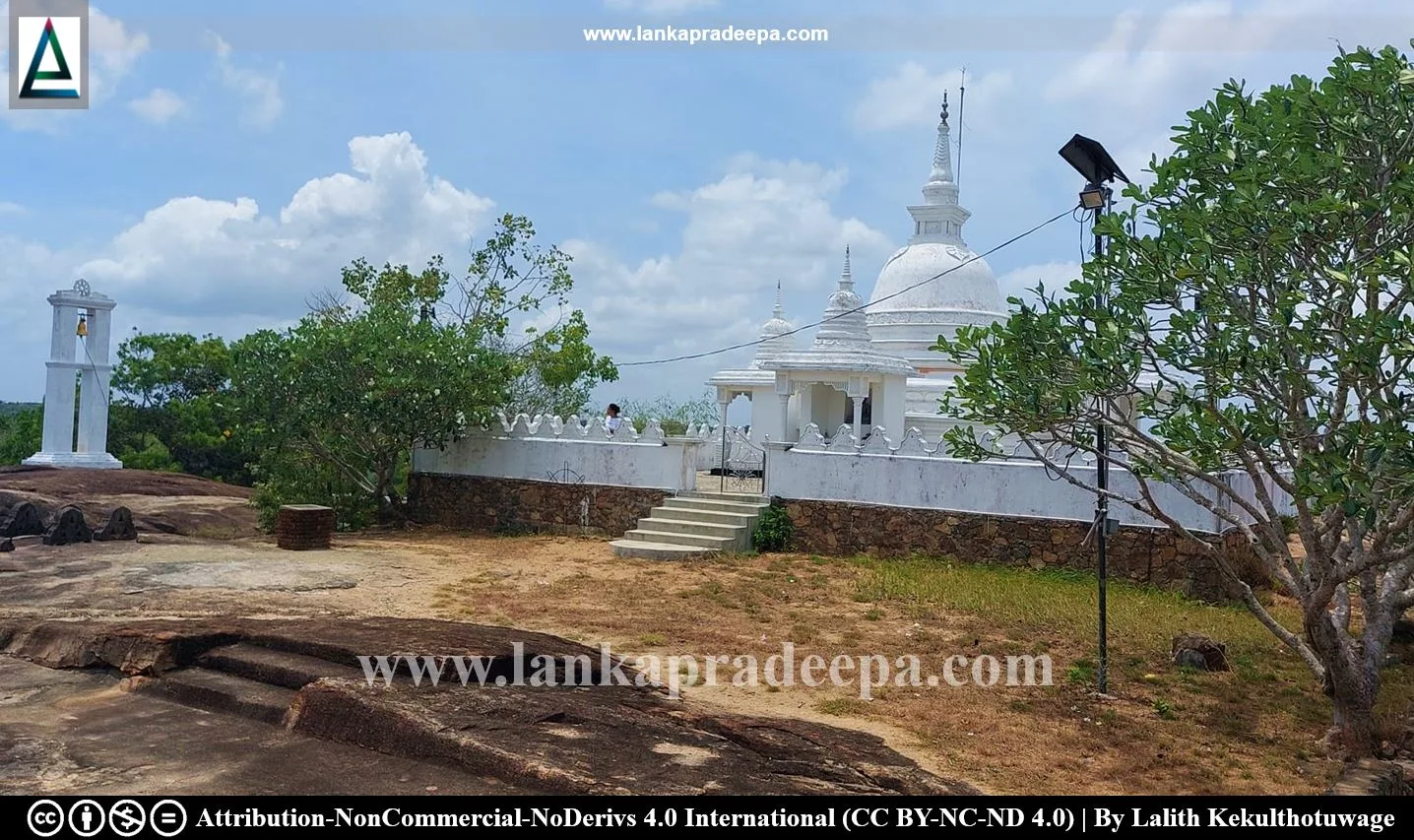
|
The Stupa and the Maharathmale inscription (1st century A.D.) |
Sri Naga Viharaya (Sinhala: ශ්රාවස්තිපුර ශ්රී නාග විහාරය) is a Buddhist temple situated in Srawasthipura village in Anuradhapura District, Sri Lanka. The Maharathmale inscription of King Mahadathika Mahanaga (7-19 A.D.) of Anuradhapura is found engraved on the rock near the Stupa of this temple.
History
The history of this site dates back to the 1st century A.D. as a rock inscription of King Mahadathika Mahanaga (7-19 A.D.) has been found at the premises (Paranavitana, 1983). The inscription consists of 4 lines and covers an area of 11 ft. 10 in. by 2 ft. 6 in. (Paranavitana, 1983; Wickremasinghe, 1912). The ancient name of the monastery at the site, which benefited from the grant recorded in the epigraph has been given but has been lost by the peeling away of some of the letters in the third line (Paranavitana, 1983).
Reign: Mahadathika Mahanaga (7-19 A.D.)
Period: 1st century A.D.
Script: Later Brahmi
Language: Old Sinhala
Content: An inscription caused to have been inscribed by King Mahadathika Mahanaga, son of King Kutakannatissa (44-22 B.C.) and grandson of Mahaculi Mahatissa (77-63 B.C.). It is mentioned that this king donated Mudagutaka, the village at Vihiribijaka together with its appurtenances to provide porridge, cooked rice, waist clothes to be used in the retreat during the rains and cloth to 20 monks from the community of the Bhikkhus of the monastery of ........ and the remainder (after providing these) for providing robes and blankets.
Reference: The information board at the site by the Department of Archaeology and the Ministry of National Heritage.
The name Vihiribijaka in this inscription is same as Viharabija which is mentioned in the chronicle Mahavamsa as the place of a name from which 500 young men joined the order of monks after having listened to the preaching of Mahinda Thera (Paranavitana, 1983). Edward Muller who mentioned about this inscription reveals that there was a destroyed Stupa to the south of it (Muller, 1883).

Related Posts
Read Also
References
Books
1) Muller, E., 1883. Ancient Inscriptions in Ceylon. London. pp.27,73,109.
2) Paranavitana, S., 1983. Maharatmale rock-inscription of Mahadathika Mahanaga. Inscriptions of Ceylon, Late Brahmi Inscriptions, 2 (part 1). Archaeological Survey of Sri Lanka. pp.34-36.
3) Wickremasinghe, D.M.D.Z., 1912. Epigraphia Zeylanica: Being lithic and other inscription of Ceylon, Vol. I. London. Archaeological Survey of Ceylon. pp.58-65.
Location Map
Dynamic Google Map
Attribution
To Whom
LankaPradeepa.com extends its gratitude to Mr Lalith Kekulthotuwage for providing the necessary photographs required for this article. All the photos are published here with the permission of the author.

